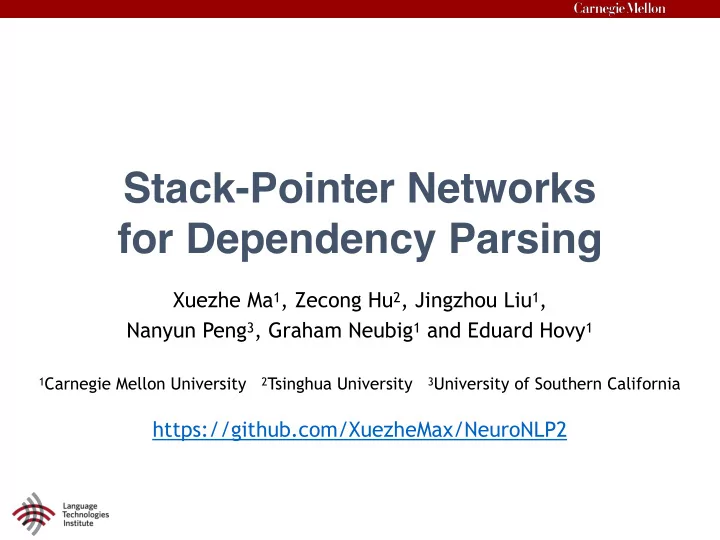

Stack-Pointer Networks for Dependency Parsing Xuezhe Ma 1 , Zecong Hu 2 , Jingzhou Liu 1 , Nanyun Peng 3 , Graham Neubig 1 and Eduard Hovy 1 1 Carnegie Mellon University 2 Tsinghua University 3 University of Southern California https://github.com/XuezheMax/NeuroNLP2
Dependency Parsing $ But there were no buyers $ But there were no buyers � 2
Transition-based Parsing • Process the input sequentially in order • Use actions that build up a tree • Choose which actions to apply with a classifier � 3
Example: Arc-standard Parsing [Yamada+ 2003, Nivre 2004] • Order: Left-to-right • Actions: Shift, reduce-right, reduce-left shift right ROOT I saw a girl ROOT I saw a girl ∅ left ROOT I saw a girl • Classifier: • Support vector machines [Nivre+ 2004] • Feed-forward neural networks [Chen+ 2014] • Recurrent neural networks [Dyer+ 2015] � 4
Our Proposal: Stack-pointer Networks (StackPtr) 2 2 3 3 4 $ But there were no buyers 0 0 0 0 0 there but were were were were $ $ $ $ $ • Order: Top-down, depth-first • Actions: "Point" to the next word to choose as a child • Model: A neural network, based on "pointer networks" • Advantages: • Top-down parsing maintains a global view of the sentence • High accuracy • Can maintain full history, low asymptotic running time (c.f. graph-based) � 5
Recommend
More recommend